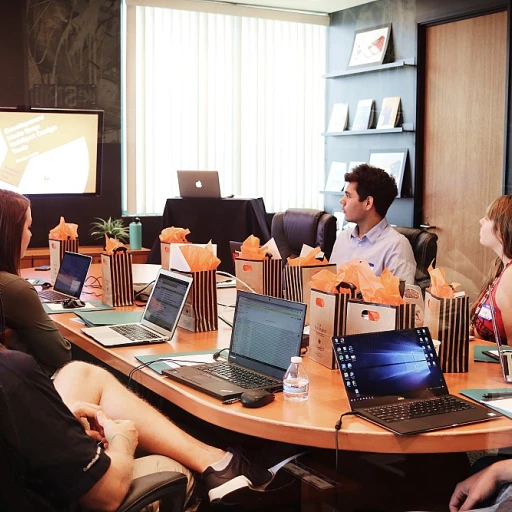
Understanding the Importance of Empathy
Recognizing the Power of Empathy in Rejections
In the dynamic landscape of job searching, a candidate's experience with a company doesn't end when they don't secure the job. On the contrary, how a company communicates rejection can significantly impact its job market reputation and future engagement with candidates. Empathy, in this case, becomes an essential element of the rejection process. Acknowledging the effort and time candidates invest in their job search allows companies to remind themselves of the human side behind every application. It's not just about a CV or an interview slot; it's about how they felt throughout the hiring process. When done with empathy, the rejection message can transform an otherwise disappointing experience into one of mutual respect and understanding. A company may find itself with future job openings and will wish to maintain connections with talented individuals who initially weren't successful. Demonstrating empathy in rejection letters or emails could ensure they remain a viable prospect in the future. Additionally, it fortifies the company’s employer brand by promoting a culture that values respectful and thoughtful communication. For the best results, companies should ensure that whoever interacts directly with applicants, such as a hiring manager or recruiting team, is prepared to deliver a rejection message that is professional yet empathetic. Human-centric communication can deter negative experiences and promote goodwill, potentially attracting top talent for future opportunities. Understanding the role of empathy in delivering rejection doesn’t only enhance the candidate’s perception of the company but also fosters a more positive candidate experience overall. This approach is not just about preserving the company’s reputation but ensuring ethical and compassionate treatment of individuals who aspire to work within the organization. For more insights, check understanding the role of data analyst recruiters in career transitions and how they can impact such dynamics.Crafting a Professional Rejection Message
Drafting a Compassionate Response
Crafting a professional rejection message requires a delicate balance between professionalism and genuine empathy. When informing a candidate they will not be moving forward in the hiring process, it’s important to consider both the language and the tone. Start by addressing the applicant by name in your email. This small gesture shows that you recognize the individual behind the application and respect the time and effort they put into their job search. It's essential to acknowledge the positive aspects of their interview or application process. For example, you might highlight a skill or experience that impressed the hiring manager. This not only demonstrates attention to detail but also fosters a more positive candidate experience, leaving candidates with a favorable view of your company despite the job rejection. ### Providing Clarity While Maintaining Respect Be clear about the decision without sugarcoating. However, it’s important to avoid overly negative language that can be discouraging. Instead, focus on constructive feedback that may help them in future opportunities. While not always appropriate, providing feedback can significantly impact an internal candidate or those who reached the later stages of the hiring process. If the reason for rejection is a lack of experience for the specific job title, you might suggest areas for development or additional qualifications that could improve their candidacy in the future. ### Offering an Olive Branch Finally, end your rejection letter or email template with an expression of willingness to keep the door open for future opportunities. This maintains a positive employer brand and encourages continued engagement with your company. Consider inviting them to follow your company's social media or to apply to other job openings that align with their skills. Encouraging connections on platforms like LinkedIn can also be beneficial. For more on leveraging LinkedIn effectively, you might want to check out essential LinkedIn strategies for a successful career transition. In crafting your message this way, you tell someone they didn’t get the job with sensitivity and respect, ensuring both parties part ways on a positive note.Choosing the Right Communication Channel
Selecting the Optimal Method for Communicating Rejections
In today's digital world, choosing the right channel for a job rejection can significantly impact the candidate experience. More than just a formality, how a company communicates rejection says a lot about its culture and values. Here are some pointers to thoughtfully choose the appropriate communication method:- Email as the Standard: For many companies, sending a rejection letter via email is the most practical method. It's efficient, allows for a concise explanation, and provides a written record for the candidate's future reference. An email template, if personalized, can add a touch of empathy while maintaining professionalism.
- The Human Touch with Phone Calls: While not always feasible, a phone call can convey empathy more effectively, especially for internal candidates or those who were advanced in the hiring process. A phone call allows hiring managers to offer constructive feedback and supports the candidate by directly addressing any questions they might have.
- Social Media and Public Forums: Rejections should never be communicated through public channels like social media. Protecting the candidate's privacy should be a priority, as public rejections could harm both the candidate's future job search and the company's employer brand.
- Hybrid Approaches for Graduated Impact: In some scenarios, a combination of email followed by a phone call can be beneficial. This approach ensures the message is clear while also allowing candidates a personal touchpoint to discuss the situation and gather valuable feedback, which can support them in their career transition.
Providing Constructive Feedback
Offering Insightful Comments for Growth
When a candidate faces job rejection, providing constructive feedback can be invaluable in making their future job search more effective. Sharing actionable insights allows applicants to understand where they might improve in subsequent interviews and enhances the overall candidate experience. Feedback should be articulated clearly and respectfully. It isn't about pointing out flaws but rather highlighting areas for improvement. Here’s an approach to ensure your feedback is effective:- Be Specific: General remarks like "you didn’t fit the role" aren't useful. Offer concrete examples based on their interview performance or application.
- Focus on Skills: Instead of critiquing personal characteristics, address the skills or experiences required for the position. Tell them if they lacked certain technical skills or if their experience didn’t align with the job's demands.
- Suggest Resources or Steps: If possible, recommend resources or tips to help them grow professionally. Whether it's a relevant training or a useful online resource, such guidance can be immensely helpful.
Maintaining a Positive Employer Brand
Building a Positive Image Through Rejection
Maintaining a positive employer brand is crucial, even when delivering a job rejection. The way a company handles the rejection process can significantly impact its reputation. When candidates receive a rejection letter, they often share their experience with others, whether through word of mouth or on social media. This can influence how future applicants perceive the company.
To ensure a positive candidate experience, it's essential to approach the rejection process with empathy and professionalism. A well-crafted rejection email or phone call can leave a lasting impression, showing that the company values the time and effort the candidate invested in the hiring process. This approach not only helps maintain a good relationship with the candidate but also enhances the company's image as a considerate and respectful employer.
Moreover, providing constructive feedback can further bolster the company's reputation. When candidates receive feedback, they feel that their application was genuinely considered, and they gain insights that can aid them in their future job search. This transparency and willingness to support candidates, even when they don’t get the job, reflect positively on the company.
Ultimately, a positive employer brand attracts top talent. When potential applicants see that a company treats its candidates with respect and empathy, they are more likely to apply for future job openings. This not only benefits the company in terms of attracting skilled candidates but also strengthens its position in the competitive hiring landscape.
Supporting Candidates in Their Career Transition
Extending Support for Career Progression
Supporting candidates in their career transition goes beyond simply informing them of a rejection. When a candidate didn’t make it through the hiring process, it’s vital for the company to extend a helping hand, fostering a network that could be beneficial for both parties in the future.- Offer Encouragement for Continued Searching: A job rejection is often discouraging, and a hiring manager should take the time to encourage candidates to continue their job search. Highlight their strengths that stood out during the interview process and reassure them that different opportunities may align more closely with their skills.
- Provide Resources for Improvement: Include links to career development resources or workshops in the rejection letter, or suggest they follow your company’s social media for announcements of future opportunities.
- Remain Open to Future Opportunities: Being transparent about future job openings can help keep the door open for candidates. Let them know they are welcome to apply for other positions within the company, and they should look out for upcoming openings that better fit their profile.
- Build a Candidate Community: Establishing an online community can help keep candidates informed and engaged. Consider creating an email template to invite them to join a newsletter or a digital community where they can connect with others in similar positions, gain insights, and share experiences.












